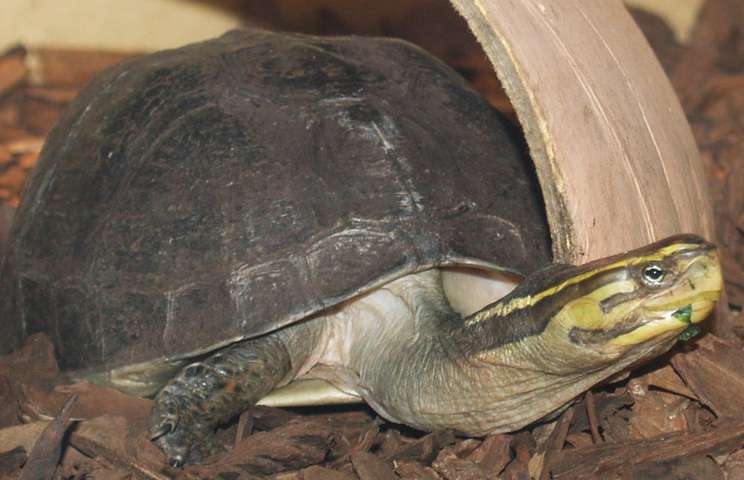
The most prevalent Musk turtle in the country is the Common Musk turtle. They live in wetlands and marshes with still waterways. Due to the powerful smell that common musk turtles may emit from their musk glands, they are also known as stinkpots.
The shells of common muskrats are dark brown or black and unmarked. They have fleshy barbels on their chins and necks, two yellowish stripes, and dark heads as well. The major prey items for nocturnal omnivorous common musk turtles are mollusks, crabs, and tiny amphibians.
Care as a Pet

Housing
Common Musk turtles are totally aquatic turtles that live in marshy or bog-like wetland settings with shallow, clear water that moves slowly. They prefer the abundance of thick vegetation in these waterways because it offers cover for hunting. The southeastern regions of Canada, as well as the central and eastern United States, are home to the common musk turtle. They favour areas with a fair amount of dampness. Despite being an aquatic species, common musk turtles are not great swimmers and prefer to stay in shallower water. Giving the turtle a depth gradient will help it choose where it wants to go. The best tank size for a single adult Common Musk turtle is a 30-gallon container. At a squeeze, 20 gallons will work, but it’s ideal to give your pet more space if possible. A minimum 40-gallon tank is required for a pair of turtles, though it’s ideal to only keep two females together.
Heat
The common musk turtle prefers moderate waters and does not require excessive heat. To keep the water between 72°F and 80°F (22 and 26°C), use a water heater. Under-tank heaters should be used with caution as they could burn your turtle as it moves down the tank’s bottom. The temperature in the basking area should be close to 90°F (32°C). Even if the Musk turtle may not be overtly basking, having a space to do so is still good for their health. If you reside in the correct climate, you might not require a water heater depending on the interior temperature of your home. Before getting a Musk turtle, make sure to carefully assess the temperature variations in your house with a full tank setup to determine whether or not you need a heater. Common Musk turtles won’t be frequent sunbathers, as we’ve already indicated, but they will still gain from having a sunbathing area. In order to assist them obtain the vitamins and minerals they require to live a long, healthy life, like Vitamin D3, they will also require a UVB bulb.
Feed
Although omnivore hunters, common musk turtles prefer to consume meat. They mostly consume small fish, amphibians, mollusks like snails and worms, and water insects in the wild. They may also on occasion consume some aquatic flora. Many of the same foods can be used to mimic this diet in captivity. Give your turtle simple mollusks to eat, such as earthworms. In addition, you can give out bloodworms, crickets, and chopped-up fish and shrimp. Put the turtle food in the tank, then watch your turtle go on the hunt. Cut up earthworms or other non-living meals to make them easier for your turtle to consume. Additionally, common Musk turtles will cheerfully eat commercial turtle pellets like ReptoMin or Mazuri. Give your Musk turtle some fresh, dark leafy greens like spinach for some variation. However, not all people will eat this kind of food; it actually relies on your turtle’s personality and eating preferences.
Table





